
| HOME | SITE MAP | ||

|
Angel is the first of four movies. Its premise is boldly stated by its tagline "high school honour student by day, Hollywood hooker by night" but the movie has more to offer than simple exploitation. This is hinted by its other tagline "her two worlds are about to collide", which is probably why it's remembered as a minor classic from 1984. The movie proved to be a success and was followed by two sequels and a cable-TV movie. The first three are widely available on DVD but the fourth is out of print and is only available on VHS or Laserdisc for those with the initiative to seek it out on the used market. The first movie introduces us to the character and her back story, and the serial killing spree that changes her life. The two that follow feature Angel revisiting the sleazy side of night life in response to events in each movie, while the final one is a fairly generic TV drama.
One reason why the great movie series that are fondly remembered are remembered is likely because they offered the audience consistency; one knows what one will get when the next movie is released and each movie contributes to the overall epic. Sadly, this isn't the case with the Angel movies: Loosely classified, the first movie is a serial-killer thriller, the second starts as a crime drama but quickly becomes something like a crime comedy, the third feels like a blaxploitation movie, while the fourth is a TV drama/murder mystery. There's some continuity between the first two movies but almost none between the last two — there doesn't seem to have been a guiding vision behind the making of the movies that was able to take the success of the first one and give the audience more of what made it so good, but at least us fans got one excellent movie in the first one.
It's unfortunate that there isn't better character continuity to these movies, as carrying over the strong characters (played by the same actors, of course) from the first movie to all four would have provided the consistency that lets the audience know its watching an Angel movie even when the genre is changed. It looks like the writers realized this but the original actors probably weren't available, forcing the creation of new street characters, but there was a problem: Only the first movie took place on Hollywood Blvd, which is a natural setting for street people and performers. It's easy to make a wacky character belong there, but setting the sequels elsewhere makes it almost impossible for such characters to successfully belong; they're fish out of water, and the audience is uncomfortable with this. It wasn't until the fourth movie that its creative team was able to have some success at making the characters belong again.
For reasons that might be lost to history each movie features a different actress playing the lead role. Continuity of actresses aside, that isn't necessarily a bad thing, as enough time has passed between each movie, story-wise, that a different actress could take over the character at a different age, explaining away such things as the character having a somewhat different personality, or mannerisms, etc. As it turns out, this was neither a bad thing nor a good thing for these movies; the casting of different actresses wasn't used to any advantage that I can see.
There are many reviews of Angel and its sequels available on the net. Many have interesting analyses of the Angel movies, so please search them out and then come back for some of my thoughts, observations, and opinions of the four movies.
Potential spoilers below have been obscured; if you want to read the obscured text then highlight it to make it visible.

|
|
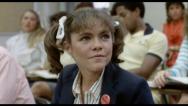
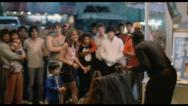
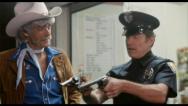
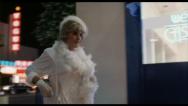
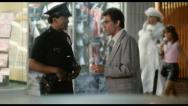
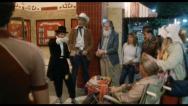
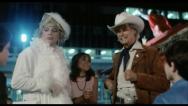
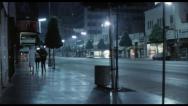
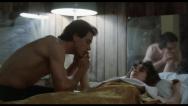
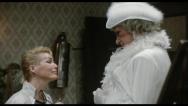
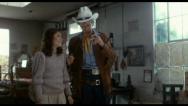
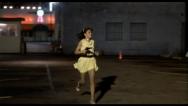
Angel is a well-made low budget thriller that introduces us to Molly Stewart (Donna Wilkes), a fifteen year old living a dual life: During the day she attends an expensive private school but during the night she is Angel, working as a prostitute on Hollywood Blvd to pay her school and living expenses.
She's in this situation after being abandoned by her parents and needing to make ends meet while preserving what remains of her lifestyle. Instead of her parents, Molly/Angel has a surrogate family of street people and other friends to look after her. It's clear that all those in her surrogate family are caring people that are able to provide what support she needs from them except financial; her surrogate family is one of the good things in her life.
The main characters form her extended family. These characters are well-suited for the story that's being told, they're unique without any overlap in their character or roles in the movie; for example, one couldn't interchange any two of them and still have the story make sense: Mae (Dick Shawn) the transvestite mother figure, Kit Carson (Rory Calhoun) the long-retired western actor is the father figure, and Solly (Susan Tyrrell) is her landlord.
Molly's doing the best she knows how to under the circumstances. She's balancing the good and the bad in her life to maintain status quo but she knows the situation is not stable because she's a minor. She knows that as soon as she's found out by authorities her life will be shattered; to explain her mother's absence Molly pretends that her mother is very ill and requires her care.
Reality intrudes on this functional but not-legally-stable family when a serial killer starts killing prostitutes, at least two of whom are Angel's friends. A "normal" father figure is introduced in the character of Lieutenant Andrews (Cliff Gorman), the police detective who is investigating the murders and whose attention is drawn to Angel by his disgust that underage prostitutes are working the streets. As he investigates her he becomes more of a father figure than Kit is; as the walls between Angel's two worlds crash down his fate is sealed when he does not turn her over to the juvenile authorities.
The serial killer plotline is forgettable; it's a MacGuffin whose purpose is to move the story along allowing the audience to watch the characters interact. That's where a lot of the magic comes from; the enjoyment of watching all five actors and how well their characters fit into the reality of the movie's Hollywood Blvd setting. The characters and their interactions are believable within the scope of what we see of them in the movie. There is the occasional wonky line, but then who in real life always delivers sparkling dialogue?
The characters are very well balanced for what they contribute to this movie, and are appropriately cast. Donna Wilkes isn't naturally a scene stealing actress, so she doesn't overshadow the others. If Angel is at the center of a balance then the scales are even with Mae, Kit, and Solly on one side, and Andrews on the other. Cliff Gorman has the charisma to pull this off, while Dick Shawn and Susan Tyrrell seem to be having great fun acting off each other in their scenes together rather than each stealing scenes they shouldn't.
Hollywood Blvd can be thought of as another character in this movie. So much of the movie was shot on that street that it makes for an early 80's time capsule for those interested in the area, but that doesn't explain the impact of the location. Is it the Hollywood mystique? Is it that it's well known for Hollywood craziness and as a place where street performers are commonplace so the audience can immediately accept the movie's characters? If that's so then one can't find a more authentic location for a story set in Hollywood involving street people and performers. The boulevard's been cleaned up in recent years; Disney restored the El Capitan theatre, the Hollywood & Highland mall was constructed (sadly, this destroyed one of the prominent Angel filming locations). Perhaps most of the seediness is gone — only locals can answer that — but the street is still a tourist draw and the street performers are still there.
The movies marketing seems to have been designed to suggest a sleazy underage prostitute exploitation movie. It looks like that marketing campaign may have been designed to create a controversy that would die down as soon as people actually saw the movie. Wisely, the movie presents a tasteful portrayal of Angel instead, with the movie's sleaze content delivered by Angel's older friends and some anonymous students.
After watching many, many, bad movies in the months before revisiting Angel it was a relief to view a good character driven exploitation movie. I think that the character driven aspect is what many fans of exploitation movies don't get about Angel. Viewers that are expecting no-holds-barred exploitation are not going to be happy with a story where the serial killer thread is secondary to character interaction, but I'm not convinced that the creative team wanted to go far in the exploitation direction anyway. Director Robert Vincent O'Neil had worked on Vice Squad (1982), demonstrating that if he had wanted to he could have taken Angel deep into exploitation territory and satisfied those that are looking for hefty doses of the usual exploitation mainstays of sleaze and violence.
This movie has been criticized as not being terribly realistic about life on Hollywood Blvd. That's probably correct but I think it misses something that is a part of the magic of this movie: The impression of the street that this movie gives me is similar to what I got from visiting the real place, and it's probably fair to assume that this is the typical tourist's impression. So accuracy isn't important because this is not a documentary, and a fantasy Hollywood Blvd is what the audience is programmed for anyway. Possibly only those that live in Hollywood can spot the difference between the fantasy and the reality.
This isn't a movie about the plight of underage prostitution despite being inspired by it. It's not about drugs. It's not about the hazards of street life. None of the main characters are homeless. This movie is simple entertainment; watch the character acting taking place around the serial-killer plotline.
The theatrical version comes to an exciting end but it doesn't resolve Angel's story; that's a huge dangling plotline that I think was a mistake not to resolve. The questions raised by the "Her two worlds are about to collide. It's her choice. Her chance. Her life." tag line remain unanswered. The resolution of the serial killer thread is not something I cared about very much, as we never got to know the killer or his motiviation. The focus of the movie was not on the killer so audience interest is not focused there either; at the end of the movie I'm more interested in what happens to the main characters next. What happens to Angel now that the authorities and her school are aware of her situation? We don't know (unless we've been lucky enough to see the TV-edit, which does answer these questions).
I loved the music. I found the incidental music to be mood-setting where appropriate and it never got in the way. To get an idea of the difference music can make one can compare the music from the movie to what was used in the trailers, which is probably library music or possibly parts of Ken Lauber's work that was originally intended for Angel.
Interestingly, I found that the music used in the trailers was very much appropriate for the trailers but that same music would not have worked in the movie itself. As far as I can tell it's not used at all in the movie.
That catchy lead number, Something Sweet, has an 80's feel but isn't dated; I can't get it out of my head either! There are some unanswered questions about this song.
Despite Angel being well-made it's not perfect; there are a few things not quite right about it.
All quibbling aside, this is easily one of my favourite movies. It has a magic that I can't fully describe but that makes it memorable. There are some hints of this magic in the first sequel but it's disappointing that the sequels don't have it like the first does. If they had then I expect this would have been a much more popular set of movies than it is; a popularity that must be solely due to the quality exhibited by the first movie.

|
|
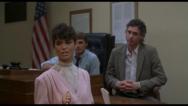
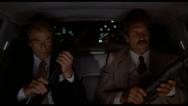
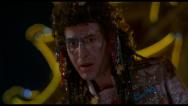
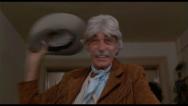
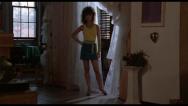
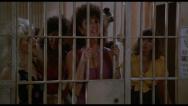
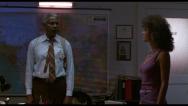
It's four years after the events of the first movie and Molly is now a law student. Avenging Angel's story is set in motion when Lieutenant Andrews is killed on duty. Molly returns to Hollywood to track down the killers, recruiting Kit (Rory Calhoun), Solly (Susan Tyrrell), and Yoyo Charlie (Steven M. Porter) — all three actors returning from the first movie — to help her get the job done. Joining the cast of eccentrics is Johnny Glitter (Barry Pearl) as the only eyewitness to the killing and thus the target of The Bad Guys.
How can a sequel by the same creative team miss the mark so widely? Let's try to understand.
So what's good about Avenging Angel?
This sequel has more sleaze than Angel but it feels like the extra comedy relief was an attempt to balance it out, perhaps confirming that the limited sleaze and depravity of the first movie was indeed the creative team's intention.

|
|
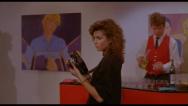
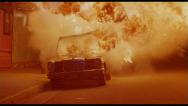
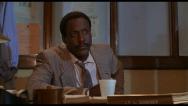
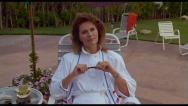
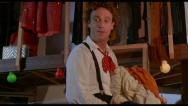
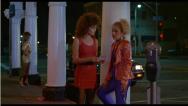
In Angel III: The Final Chapter Molly is now working in New York as a freelance photographer. She spots her mother in a photo that she shot on assignment and returns to Los Angeles to track her down. She does, only to discover that her mother is trapped working for organized crime and that she has a half-sister who has disappeared. After becoming contrary with her crime-boss Molly's mother is disposed of via a car bomb, and so Angel reappears to avenge this and rescue her half-sister.
In this installment the helpful police lieutenant is played by Richard Rowndtree. He gives a solid performance, as usual.
This movie's connection with Molly's past life on the street as Angel is provided by Spanky (Mark Blankfield). This isn't as effective a connection as it could be because we haven't seen the character before; it seems to be not much more than a nod to the street-life that was memorable in the original movie. I get the impression that they tried to create a character similar to Mae through Spanky but it didn't work out like that; the character has charm but Dick Shawn was unique.
There must be an untold story here about her career change as she was all set to become a lawyer in the previous movie.
A new director/writer sure shakes things up but isn't necessarily a good thing. This third movie pours on the sleaze but doesn't have a hint of the magic found in the first movie. However, if one can ignore the first two movies then Angel III is all right on its own terms. Its plot doesn't break any new ground and could easily have been used for a blaxploitation film; if Pam Grier had played Angel then the movie would not be out of place triple-billed with Coffy and Foxy Brown.
This one is sleazier than the first two movies combined, perhaps in response to exploitation fans that still wanted more, but it's lost that sense of wacky fun. The movie is not without some characterization though — such as Spanky — and that's a plus.

|
|
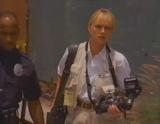
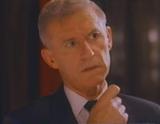
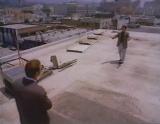
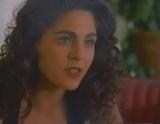
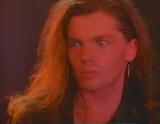
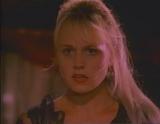
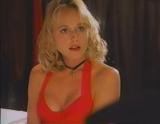
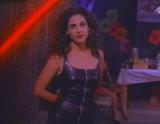
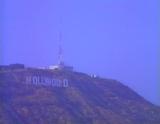
Despite the Final Chapter title of Angel III, a fourth movie was made, Angel 4: Undercover, possibly as a pilot for a cable-TV series that never happened. In this installment Molly is a "lady cop photographer of dead people", to borrow the movie's most quotable line; the freelance photographer of the third movie is now a Los Angeles Police crime scene photographer. This is a believable career change, unlike the unexplained jettisoning of her lawyerly aspirations of the second movie for the photography career of the third.
Molly's boyfriend works as a DJ at a radio station where some employees are taking payola to promote the next hot band managed by the story's lead villain (Roddy McDowall) It's quickly made clear that the bad guys don't like being messed with when an under-promoting promo guy ends up taking a fatal fall from the roof of the station building while fleeing from the bad guy's enforcer. Take a close look at the cityscape background during this sequence for what I believe is the only view of Hollywood Blvd in this movie.
Molly hears from Paula, an old friend of hers from the street, who has turned her life around and is involved with the same soon to be hot band. When this friend is murdered Molly suspects the band's out-of-control lead singer (Shane Fraser, who does a great crazy-eyed expression), so she goes undercover (as Angel, naturally) looking for proof. Typical 90's late night TV-movie hijinks with lots of sleaze ensue as Angel finds the evidence while avoiding tipping off the bad guys.
The climax should provoke controversy because it's clear that Angel knowingly causes the death by impalement of the lead singer's jealous and angry girlfriend. That's out of character, even though the girlfriend had just done a rather poor job of trying to kill or at least severly injure Angel. As is all too common this death has no repercussions for the good guy and is forgotten as soon as it happens.
I found Angel 4 to be entertaining enough that I can recommend watching it once. It's mindless entertainment that doesn't have any of the qualities that made Angel so good, but can be enjoyed if one isn't expecting that. Just like Angel III, this one has to be taken on its own terms; it has only the loosest ties to the first two movies — if the lead character were renamed then nobody would know it was an Angel movie.
Those loose ties perhaps make it easier to accept the suddenly blonde Molly/Angel (Darlene Vogel). Unless I missed it, there's no dialogue to explain this change; is one supposed to assume she decided to become blonde one day, or will the cynical viewer reflect that because this is the fourth actress to play the role the powers that be simply didn't worry about casting a blonde actress? It would have been easy to have a throwaway line to clear up this point when Angel met up with Paula after not seeing her for years, or is that done often enough that it would be a cliché?
With her dark hair Paula (Kerrie Clark) looks a lot like the Angel of the previous movies, particularly Mitzi Kapture. If this resemblence was noticed before filming began then it reflects an interesting casting choice because the audience would certainly notice it. Did Kerrie Clark audition for the Angel role but end up playing Paula instead? One can't help but wonder what her portrayal of Angel would have been like.
Unfortunately, this movie is lacking entirely any wacky street characters. Angel drew a lot of its charm from those characters, and integrity from their believable personalities, so Angel 4 has almost no chance of capturing the feel of the original. The wackiest character is the lead singer, and he does provide some comical moments occasionally but despite some personal insight scenes he's not as likable as any of the characters from Angel.
The characters don't evoke the mood of the first movie, and neither do the exteriours; Angel was mostly Hollywood at night but Angel 4 is Hollywood during the day; it's not that the itself movie suffers for it, it's just different in the comparison in a way that further distances it from the original's mood. I haven't a clue where most of the exteriours were shot but there are a few very welcome scenes of Hollywood. Sadly, this movie doesn't take place on Hollywood Blvd as the first one did, but buildings that are on the Boulevard are visible in the scenes where the promo guy is about to fall off the roof; buildings which locate the station building as being on Schrader Blvd despite the fake address given in the movie.
The last scene is a pan across the Santa Monica Mountains and Los Angeles that evokes memories of the opening pan from Angel. It was filmed at the Hollywood Bowl Overlook on Mulholland Drive about 1200m north of Angel's Yamashiro Restaurant parking lot location. Beginning at the Hollywood Sign and panning to Hollywood and Vine, it doesn't quite pan far enough to reach the area of Hollywood and Schrader (although the fake address given for the station suggests it isn't fair to criticise this point as the station isn't meant to be at that location in real life). Coming at the end of the movie, location establishment probably wasn't the point of this scene; although, if this were the pilot for a TV series then the image of downtown Los Angeles in the distance with Hollywood in the foreground would work to establish a general locale for stories that would have followed.
I sense a bit of a mystery behind the promotion of Angel 4. The VHS cover ad copy attempts to evoke the first movie's marketing with its "executive by day/hooker by night" tags and matching imagery, and the "from the boardroom to the bedroom" slogan. The problem is that Molly is not at all a corporate executive. What's the story behind this; was there a major rewrite that somebody forgot to tell marketing about?
So, watch Angel 4: Undercover for the entertaining bits but don't expect the good qualities of the first movie.
| Copyright © 1996-2011 Toomas Losin | Contact | Disclaimer | ||